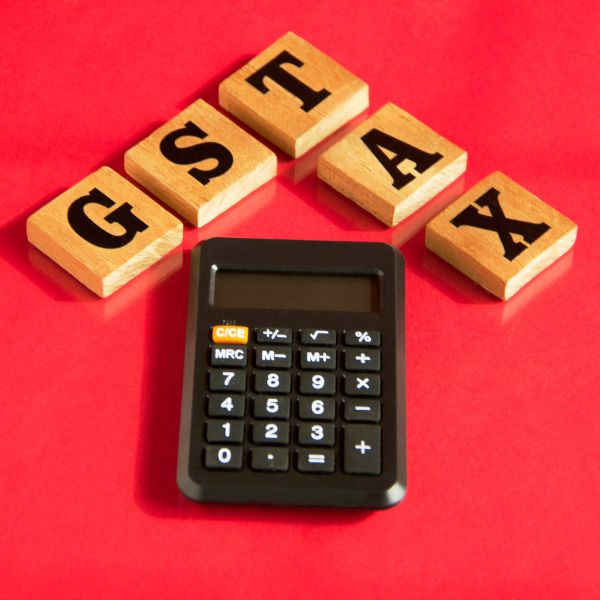
What is Section GST Registration?
A firm or individual must register for GST in order to receive a special Goods and Services Tax (GST) identification number from the tax authorities. Businesses that reach specific revenue limits are required to register for GST. Businesses can claim input tax credits for the GST paid on their purchases and collect and remit GST on their taxable supply thanks to the GST registration. Additionally, it creates the business's legal standing as a GST-registered company and imposes compliance requirements, including the need to submit timely GST reports and keep accurate financial records. Indirect tax management and collection are made easier thanks to GST registration, which also guarantees the tax system is transparent and accountable.
Process of GST Registration:
- Using turnover thresholds or voluntary registration, determine if you are eligible for GST registration.
- Amass the necessary information and documentation.
- Register as a user on the official GST website.
- Give the GST registration form your complete, correct business information.
- Upload any necessary papers in accordance with the instructions.
- Wait for the tax authorities to confirm and validate the information.
- Upon successful registration, obtain the one-of-a-kind Goods and Services Tax Identification Number (GSTIN).
- Utilise the supplied credentials to log into your GST account on the portal.
- Follow through on recurring commitments, such as timely filing of GST returns and maintaining accurate records.
- Follow any extra requirements or instructions given by the tax authorities.


Register for GST through Shri Associate
- Determine your eligibility: Check if your business meets the eligibility criteria for GST registration in your country. This may include turnover thresholds or specific business types.
- Gather required documents: Collect all the necessary documents such as business registration proof, PAN card, identity and address proof of the business owner/partners/directors, bank account details, and any other documents as specified by your country's tax authority.
- Visit the official GST portal: Go to the official GST registration portal of your country. In India, for example, it is the Goods and Services Tax Network (GSTN) portal.
- Fill out the registration form: Fill out the GST registration form with accurate details of your business, including business name, address, contact information, and the nature of your business activities.
- Upload required documents: Upload the necessary documents as per the instructions provided on the registration portal. Ensure that the documents are valid, clear, and meet the specified size and format requirements.
- Submit the application: After completing the form and uploading the documents, submit the application on the GST registration portal. You may need to pay the requisite fees, if applicable.
- Acknowledgment and verification: Once you submit the application, you will receive an acknowledgment or an Application Reference Number (ARN). The tax authority will verify your application and documents, which may involve additional scrutiny or inquiries.
- GST registration certificate: If your application is approved, you will receive your GST registration certificate. This certificate will serve as proof of your GST registration and will contain your unique GSTIN (Goods and Services Tax Identification Number).
Process of GST Registration:
- Using turnover thresholds or voluntary registration, determine if you are eligible for GST registration.
- Amass the necessary information and documentation.
- Register as a user on the official GST website.
- Give the GST registration form your complete, correct business information.
- Upload any necessary papers in accordance with the instructions.
- Wait for the tax authorities to confirm and validate the information.
- Upon successful registration, obtain the one-of-a-kind Goods and Services Tax Identification Number (GSTIN).
- Utilise the supplied credentials to log into your GST account on the portal.
- Follow through on recurring commitments, such as timely filing of GST returns and maintaining accurate records.
- Follow any extra requirements or instructions given by the tax authorities.

Benefits of GST Registration:
- Is officially acknowledged as a provider of products or services.
- Ability to purchase using an input tax credit.
- Allows for unrestricted interstate commerce.
- Increased market credibility and competitiveness.
- Obeying the rules and laws relating to taxes.
- The advantages of input tax credits have improved supplier relationships.
- Eligibility for contracts and bids from the government.
- Access to accrued credit input tax refunds.
- Decreased administrative load and simplification of tax procedures.
- Promotion of tax system transparency.
GST Registration Rules
It is necessary to register for the Goods and Services Tax (GST), which is governed by a set of rules and procedures that specify the prerequisites, eligibility requirements, application process, compliance requirements, and repercussions. These regulations, which differ according to jurisdiction, are intended to guarantee appropriate management, observance, and successful implementation of the GST system. They offer advice to companies and people who want to register for GST, assisting them in understanding the procedures, the paperwork needed, and the continuous responsibilities they must meet to be in conformity with the tax authorities. To guarantee correct tax reporting, promote efficient business operations, and prevent fines or legal ramifications, compliance with GST registration regulations is essential.

FAQ:
Yes, you can make changes to your GST registration details such as business address, contact details, or authorized signatory details by filing an amendment application on the GST portal.
No, there is no fee for GST registration. It is free of cost. However, professional fees charged by consultants or GST practitioners may apply.
The registration process usually takes between 2 to 6 working days, depending on the verification process and the workload of the tax authorities.
GST Registration is the process of obtaining a unique Goods and Services Tax Identification Number (GSTIN) from the tax authorities to carry out business activities under the GST regime.
Businesses whose turnover exceeds the prescribed threshold or those engaged in specific categories of businesses as defined by the tax authorities need to register for GST.
Yes, voluntary registration for GST is allowed even if your turnover is below the threshold. It can provide certain benefits like claiming input tax credits and expanding your business reach
You can register for GST by filling out the online application form available on the official GST portal and providing the required documents and information.
The commonly required documents include PAN card, proof of identity and address, business registration proof, bank account details, and photographs of the authorized signatory.
Non-registration or failure to register for GST when required may result in penalties, fines, and legal consequences imposed by the tax authorities.
No, under the GST regime, a single GST registration can be obtained for the entire country, except for businesses operating as a casual taxable person or non-resident taxable person.
Documents Required for GST Registration
- PAN Card
- Proof of Identity
- Proof of Address
- Business Registration Proof
- Bank Account Details
- Photographs
- Business Address Proof
- Authorized Signatory Details
- Digital Signature Certificate (DSC)
- Other Supporting Documents


